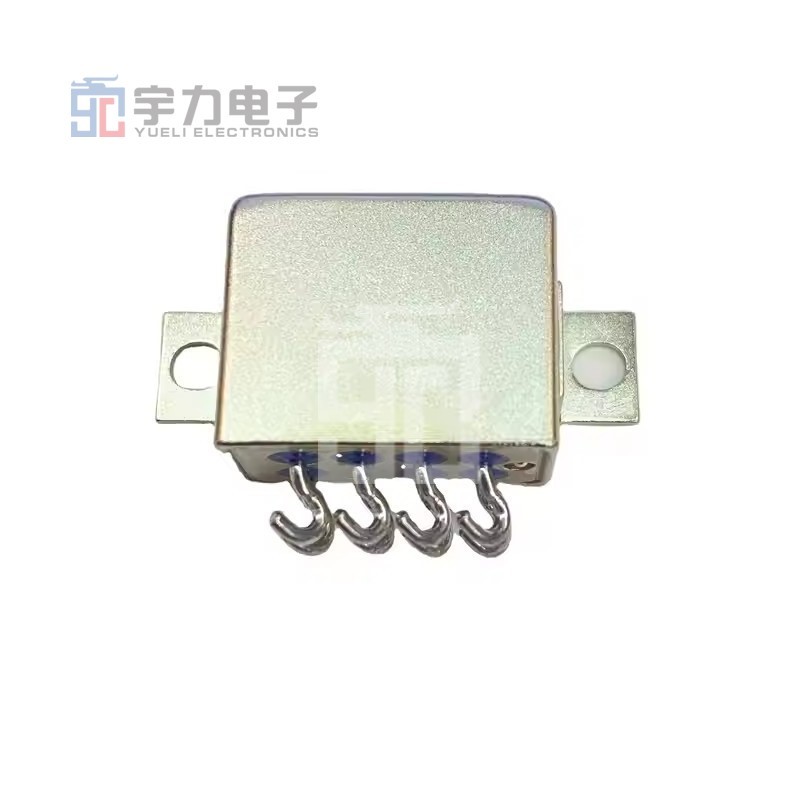Understanding High Power Relays: Essential Insights for Your Electronic Projects
2025-08-08

High power relays are essential components in the field of electronics, particularly when it comes to controlling high voltage and high current circuits. These devices serve as electrically operated switches, allowing the flow of electricity through a circuit and enabling the control of larger loads with minimal input power. Understanding their functionality, applications, and specifications will help you make informed decisions for your electronic projects.
One of the primary features of high power relays is their capacity to handle substantial electrical loads. These relays are designed to switch currents that can range from several amperes to hundreds of amps, depending on the specific model. This capability makes them ideal for various applications, including industrial automation, power distribution, and automotive systems.
In industrial settings, high power relays are frequently used to control motors, heaters, and other heavy equipment. Their ability to manage significant power levels makes them indispensable for reliable operation and safety in these environments. In automotive applications, such relays are often utilized to control starter motors, lighting systems, and other high current devices, ensuring efficient performance and longevity.
When selecting a high power relay, several critical factors must be taken into account. First, consider the relay's voltage and current ratings to ensure they align with your circuit requirements. Additionally, the relay's contacts must be capable of withstanding the load without overheating or welding together, which could lead to circuit failure.
Another important aspect to consider is the relay's response time. High power relays typically have various response times, impacting how quickly they can switch on and off. Faster response times can be essential in applications requiring rapid switching, while others might prioritize stability and durability over speed.
Furthermore, the method of actuation should also be evaluated. High power relays can be operated using electromagnetic coils, solid-state technologies, or other mechanisms. Each type has its advantages and disadvantages, such as the electromagnetic relay's physical switching versus the solid-state relay's faster response and longer lifespan.
Lastly, environmental considerations are vital when selecting high power relays. Factors such as temperature, humidity, and exposure to corrosive elements can affect relay performance. It's crucial to choose a relay rated for the specific conditions it will encounter in its application.
In conclusion, high power relays are integral components in various electronic applications, providing the ability to control significant loads safely and efficiently. By understanding their features, applications, and selection criteria, you can significantly enhance the reliability and performance of your electronic projects. Whether you are working on industrial systems, automotive electronics, or other high-power applications, the right high power relay will ensure your designs achieve the desired outcomes.
One of the primary features of high power relays is their capacity to handle substantial electrical loads. These relays are designed to switch currents that can range from several amperes to hundreds of amps, depending on the specific model. This capability makes them ideal for various applications, including industrial automation, power distribution, and automotive systems.
In industrial settings, high power relays are frequently used to control motors, heaters, and other heavy equipment. Their ability to manage significant power levels makes them indispensable for reliable operation and safety in these environments. In automotive applications, such relays are often utilized to control starter motors, lighting systems, and other high current devices, ensuring efficient performance and longevity.
When selecting a high power relay, several critical factors must be taken into account. First, consider the relay's voltage and current ratings to ensure they align with your circuit requirements. Additionally, the relay's contacts must be capable of withstanding the load without overheating or welding together, which could lead to circuit failure.
Another important aspect to consider is the relay's response time. High power relays typically have various response times, impacting how quickly they can switch on and off. Faster response times can be essential in applications requiring rapid switching, while others might prioritize stability and durability over speed.
Furthermore, the method of actuation should also be evaluated. High power relays can be operated using electromagnetic coils, solid-state technologies, or other mechanisms. Each type has its advantages and disadvantages, such as the electromagnetic relay's physical switching versus the solid-state relay's faster response and longer lifespan.
Lastly, environmental considerations are vital when selecting high power relays. Factors such as temperature, humidity, and exposure to corrosive elements can affect relay performance. It's crucial to choose a relay rated for the specific conditions it will encounter in its application.
In conclusion, high power relays are integral components in various electronic applications, providing the ability to control significant loads safely and efficiently. By understanding their features, applications, and selection criteria, you can significantly enhance the reliability and performance of your electronic projects. Whether you are working on industrial systems, automotive electronics, or other high-power applications, the right high power relay will ensure your designs achieve the desired outcomes.


